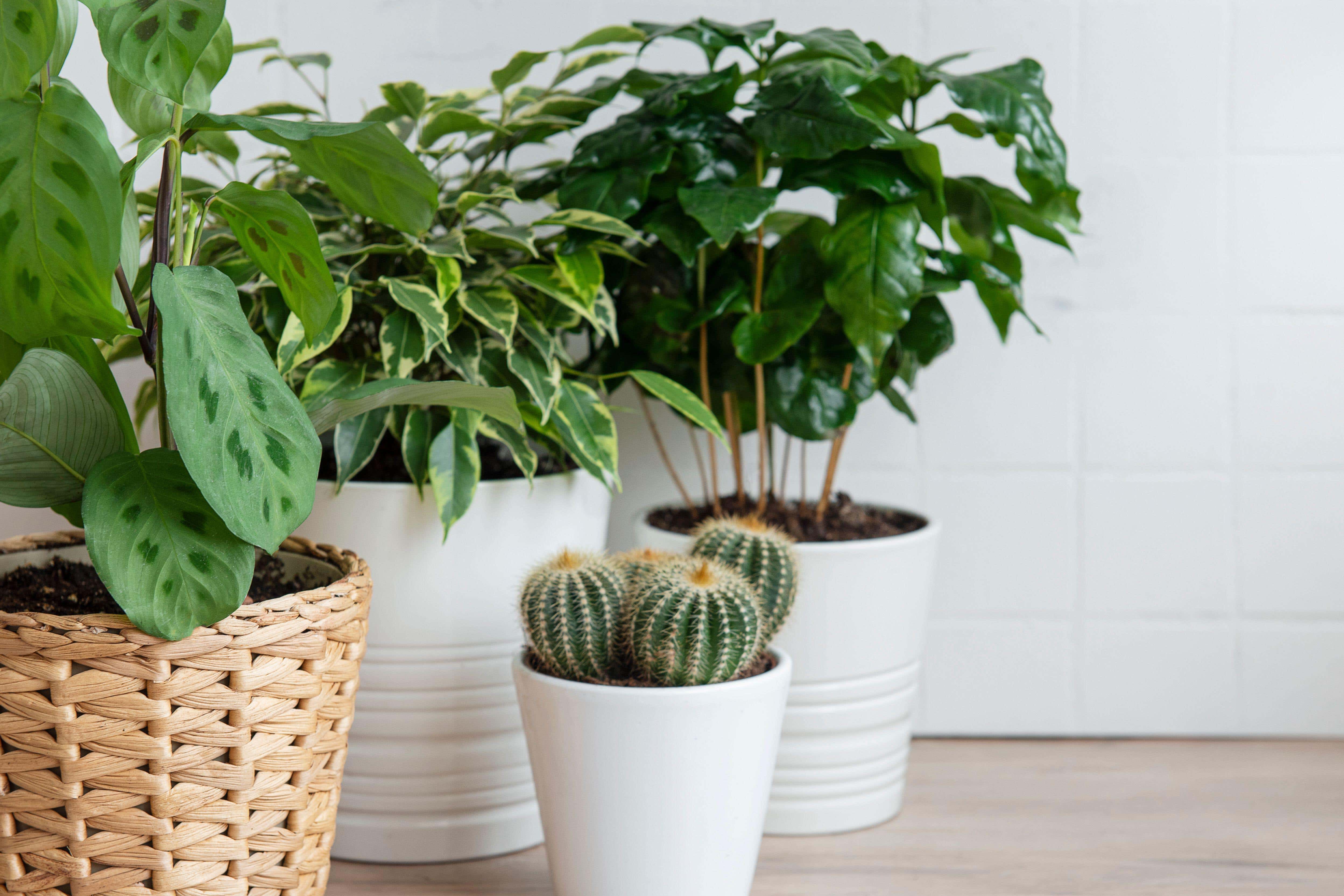How to style your living space with indoor plants
Designer and author Jason Chongue offers tips on texture, colour and scale.

Your support helps us to tell the story
From reproductive rights to climate change to Big Tech, The Independent is on the ground when the story is developing. Whether it's investigating the financials of Elon Musk's pro-Trump PAC or producing our latest documentary, 'The A Word', which shines a light on the American women fighting for reproductive rights, we know how important it is to parse out the facts from the messaging.
At such a critical moment in US history, we need reporters on the ground. Your donation allows us to keep sending journalists to speak to both sides of the story.
The Independent is trusted by Americans across the entire political spectrum. And unlike many other quality news outlets, we choose not to lock Americans out of our reporting and analysis with paywalls. We believe quality journalism should be available to everyone, paid for by those who can afford it.
Your support makes all the difference.Houseplants can create a mood in a room, whether you want energy, calm or just a sense of cosiness.
What you achieve not only depends on your choice of plants but also how you position them, match them with your interior décor, and scale them up or down, says Jason Chongue, designer and author of new book, The Plant Society Design Handbook.
“It’s important you make sure the plants you group together all live in the same micro-climate. There’s no point, for instance, planting a cactus with a tropical plant because the watering and lighting requirements will be different,” Chongue begins.
Textures
“I like to play with a range of textures to add some layering,” he adds. “Some people like to use the same texture of plant, which creates a flat tone throughout. I prefer to use something that’s got a bold leaf to it and then something that’s more intricate in terms of a foliage texture.”
You can harness texture from light and colour too: “Look at how the light comes through your space and how that can create texture in your house.
“A fern, for instance, will cast more intricate shadows on the wall, as opposed to a monstera, which will have more of a solid shadow. It’s almost like using a sheer curtain as opposed to a blackout.”
Plants with upright foliage, such as snake plants, work well with detailed planters as their upright nature allows the planter to remain visible.
Shapes and space
“Shapes are more important than we think, because a lot of people don’t want to style their homes even with much furniture because they think it will make it feel more cramped as we are living in smaller spaces,” he says.
“So, look at how functional a space needs to be. Rather than have a really wide-growing plant or a wide planter, incorporate a plant which is narrow and tall, which has a growth habit that goes straight up, if you have a tight space.”
Plants such as a bird of paradise might be suitable for this. “Think about what a plant will grow into rather than what it looks like when you buy it,” he adds.
If you have a bigger space to fill, play with odd numbers, he suggests, whether it’s clusters of three or five, to make it a bigger gesture.
“You could use three to five different plants and a series of different shaped planters, maybe in the same colour, so that it doesn’t feel like you’ve just gone to the thrift shop and bought whatever you saw.
“I love rubber plants, so Ficus elastica, which can be quite sculptural, and you can get them in different leaf colours, from burgundy to green. They are handy if you want to fit them into a big space because they soon become quite a specimen.”
Colour
Think about the colour palette and feel of your home when deciding whether to go for bold or bright colours when choosing plants.
If your décor is bold and colourful, you might go for calatheas (peacock plants), which have colourful undersides, or veer towards handmade pots or powder coated metals in shades of blues, reds and oranges, Chongue suggests.
“When I have a really patterned planter, I’ll choose a simple plant to go with it to control the chaos. You can let the foliage do the work.”
If you want a calm mood, have similar colours or tones among all your planters.
Greenery is a breath of fresh air in a room with a monochrome palette, as the plants help make the space more inviting.
Using similar tones in both your soft furnishings and your planters can make for a stronger aesthetic, he adds. Chongue uses dark, earthy planters in minimalist settings, so he might go for Ficus elastica in that environment or devil’s ivy which adds a hint of colour to a neutral space.
Placement
“There are always corners in a home where you want to fill the space, such as between your sofa and an armchair. This is a good space for plants. I would tend to cluster or have a single specimen. And I like using smaller planters on dining or coffee tables.”
Scale
“Scale is important. I tend to cluster three different sizes in heights, if you are grouping three plants,” says Chongue.
He uses hierarchy of scale, as our eyes adjust easily to points. So, when we view a collection of plants, they’re easier on the eye when they stack up so that the top of the tallest plant is the focal point, before our eyes are drawn down to the others in the group.
Think about the silhouettes of plants, rather than focusing on the details of the plants and planters. And give hierarchy to either the plant or the planter, not both.
The Plant Society Design Handbook by Jason Chongue is published by Murdoch Books, priced £25. Available now.